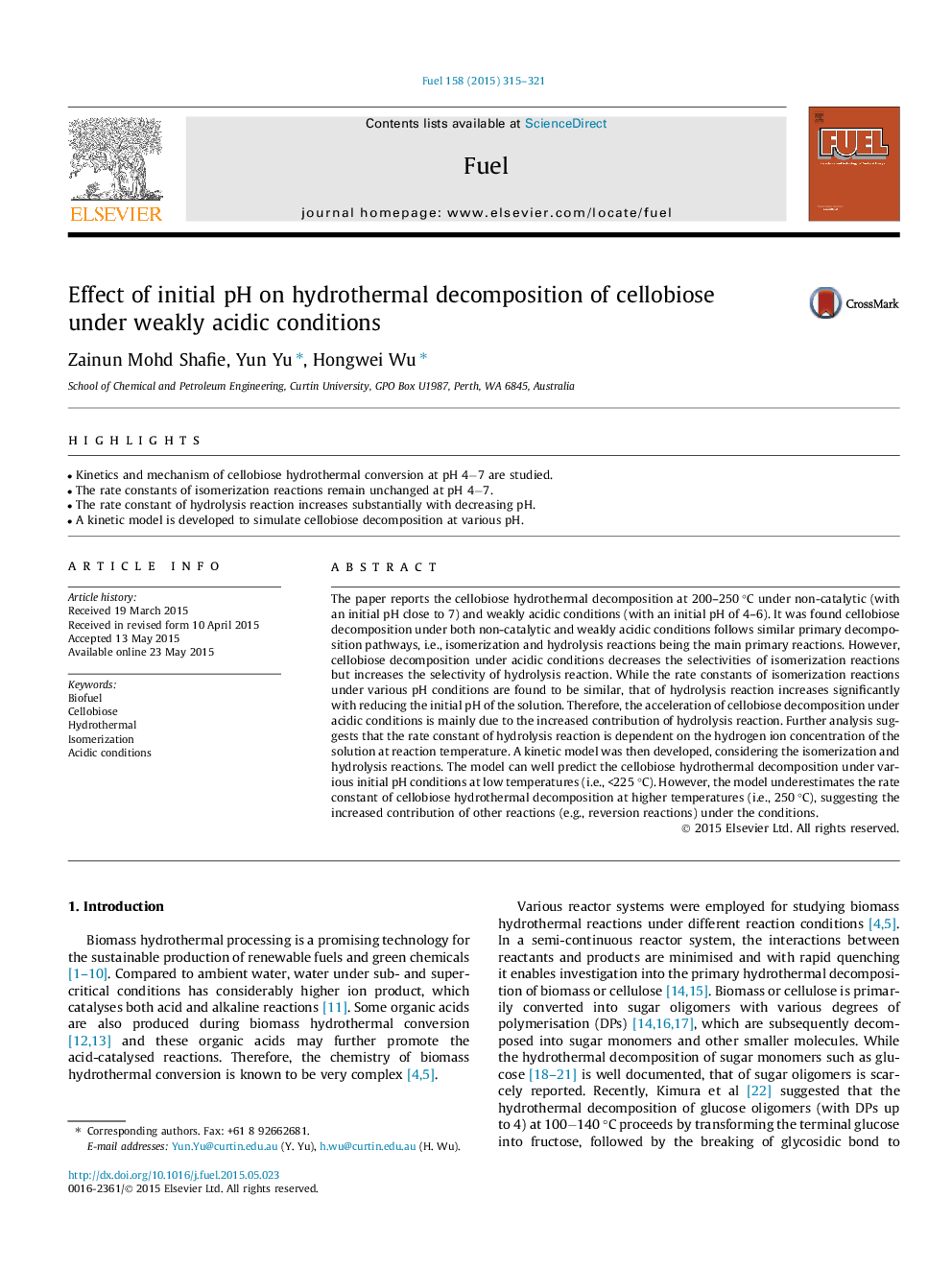| Article ID | Journal | Published Year | Pages | File Type |
|---|---|---|---|---|
| 6634963 | Fuel | 2015 | 7 Pages |
Abstract
The paper reports the cellobiose hydrothermal decomposition at 200-250 °C under non-catalytic (with an initial pH close to 7) and weakly acidic conditions (with an initial pH of 4-6). It was found cellobiose decomposition under both non-catalytic and weakly acidic conditions follows similar primary decomposition pathways, i.e., isomerization and hydrolysis reactions being the main primary reactions. However, cellobiose decomposition under acidic conditions decreases the selectivities of isomerization reactions but increases the selectivity of hydrolysis reaction. While the rate constants of isomerization reactions under various pH conditions are found to be similar, that of hydrolysis reaction increases significantly with reducing the initial pH of the solution. Therefore, the acceleration of cellobiose decomposition under acidic conditions is mainly due to the increased contribution of hydrolysis reaction. Further analysis suggests that the rate constant of hydrolysis reaction is dependent on the hydrogen ion concentration of the solution at reaction temperature. A kinetic model was then developed, considering the isomerization and hydrolysis reactions. The model can well predict the cellobiose hydrothermal decomposition under various initial pH conditions at low temperatures (i.e., <225 °C). However, the model underestimates the rate constant of cellobiose hydrothermal decomposition at higher temperatures (i.e., 250 °C), suggesting the increased contribution of other reactions (e.g., reversion reactions) under the conditions.
Related Topics
Physical Sciences and Engineering
Chemical Engineering
Chemical Engineering (General)
Authors
Zainun Mohd Shafie, Yun Yu, Hongwei Wu,
